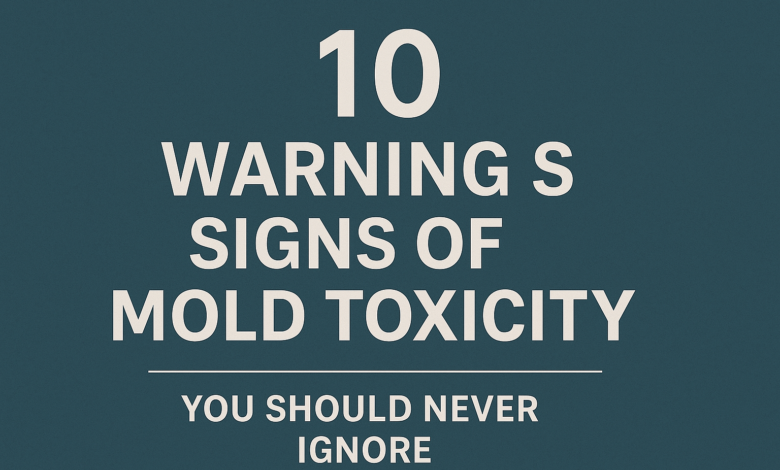10 Warning Signs of Mold Toxicity You Should Never Ignore

Mold can be a silent danger in your home — hiding in walls, ceilings, or under carpets, slowly affecting your health without a clear warning. If you’ve been feeling unwell without an apparent cause, you might overlook one of the most underestimated environmental hazards: mold toxicity.
In this post, we’ll explore the 10 warning signs of mold toxicity, how to spot them, and what steps to take if you suspect mold is the culprit.
What Is Mold Toxicity?
Mold toxicity, also known as mycotoxicosis, occurs when your body reacts to harmful compounds released by mold — called mycotoxins. These toxins can trigger a wide range of physical and neurological symptoms, especially in people who are sensitive or exposed over a long period.
1. Persistent Fatigue That Doesn’t Go Away
If you’re constantly tired even after getting enough rest, mold exposure might be draining your energy. Mycotoxins interfere with cellular energy production, leaving you feeling sluggish and foggy.
2. Chronic Sinus Congestion
Recurring sinus issues such as nasal congestion, sinus headaches, or post-nasal drip can be early signs. Mold spores in the air can inflame the mucous membranes, triggering allergic-like symptoms even if you’re not allergic to mold.
3. Unexplained Skin Rashes or Irritation
Dry, itchy, or red patches of skin — especially when accompanied by no known cause — may indicate mold toxicity. The skin reacts to internal inflammation and toxin buildup in the body.
4. Brain Fog or Memory Issues
Struggling to concentrate, experiencing forgetfulness, or feeling mentally dull could be linked to long-term mold exposure. These neurological symptoms are often overlooked but familiar with mold-related illnesses.
5. Chronic Headaches or Migraines
Frequent headaches with no apparent trigger? Mold could be to blame. Toxic exposure can inflame the brain and nervous system, leading to throbbing or persistent pain.
6. Coughing and Shortness of Breath
Difficulty breathing, chest tightness, or a nagging cough are not just seasonal issues. Mold spores and toxins irritate the lungs and airways, especially in poorly ventilated spaces.
7. Heightened Allergy Symptoms
Even if you’ve never had allergies, mold exposure can lead to sneezing, watery eyes, and a scratchy throat. These symptoms often worsen in damp or mold-prone environments.
8. Muscle Aches and Joint Pain
Some people experience joint stiffness or unexplained body aches after prolonged exposure. These symptoms are linked to inflammation caused by mold toxicity, not just physical strain.
9. Mood Swings or Anxiety
Believe it or not, exposure to mold toxins can also impact mental health. Irritability, anxiety, and mood swings have all been reported, especially in environments with hidden mold.
10. Heightened Sensitivity to Smells
Do strong scents suddenly bother you? Mold exposure can sensitize your nervous system, making you more reactive to smells, chemicals, and even foods that never affected you before.
How to Confirm If It’s Mold Toxicity
While these signs indicate potential exposure, only professional mold testing and medical diagnosis can confirm it. Consider these steps:
- Schedule an air quality or mold inspection.
- Get a mycotoxin panel test from your healthcare provider.
- Inspect damp areas in your home — especially basements, bathrooms, and kitchens.
- Use air purifiers equipped with HEPA filters to improve indoor air quality.
Final Thoughts: Don’t Ignore the Signs
Mold toxicity is accurate, and it can quietly sabotage your health. If you’ve noticed several signs above, it’s time to take action — your body might be trying to warn you. Early detection and removal of mold sources are key to recovering your health and peace of mind.
✅ Proactive Tip:
If you’ve already spotted mold or experienced these symptoms, don’t delay. Contact a mold remediation specialist and talk to a medical professional familiar with environmental toxins.





